Skull and Bones Review
A lifeless voyage
It's never fun to hear about games that are stuck. Whether from lack of budget, internal issues, or other reasons, being in development hell drains resources and morale for all involved. If the title does eventually launch, the years of delays and subsiding fan anticipation undoubtedly also hurt its chances to make a positive impression. This is exactly the sort of situation that Skull and Bones has found itself in. After being announced way back in 2017, the game struggled through multiple delays and apparent redesigns. Now that it has finally crossed the finish line, the seafaring pirate title is a middling adventure that still bears the scars of its turbulent development.
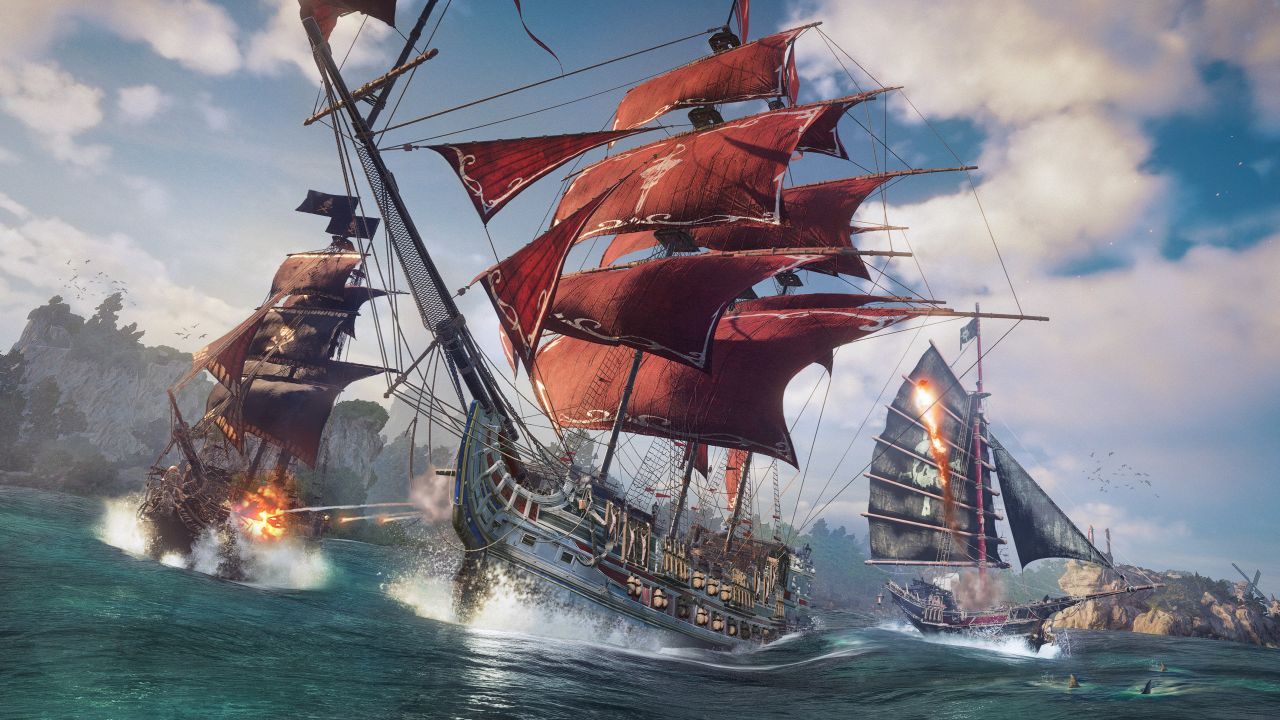
Skull and Bones takes players to the 17th century, a time of piracy in the Indian Ocean. As a survivor of a shipwreck, you find yourself on a small skiff, sailing to Sainte Anne, a pirate den of the region. There, a local pirate kingpin named John Scurlock takes an interest and offers you a small starter ship to command. You are sent on a variety of missions to help establish John's control over the local island region, as well as create conflict between other nearby factions. Eventually, you get to cross the open waters into Southeast Asia, to the second pirate den in the game Telok Penjarah, where you meet another local pirate lord and run missions for her, where it's a bit more personal and about seeking freedom and recovering family heirlooms.
The narrative across this series of main story missions is weak at best. You get to listen to plenty of dialogue being delivered by these two pirate lords, but that's about it – they will tell you about their grand schemes, political intrigue, and big changes in balance of power – but players see none of that unfold in the game. There are some half-baked ideas, like occasional dialogue choices that affect nothing. These main missions end up being just a means of pushing players to different parts of the world map, which is an expected function of the campaign, but it offers little more beyond this minimum.
Thankfully, the core gameplay is what helps the experience from sinking in port. Fans have been waiting for Ubisoft to recapture the magic of Assassin's Creed IV: Black Flag, and while Skull and Bones is not trying to be an exact replica of that experience, it still benefits from doing the same basics right. Players assume direct control of their sea vessel; you steer and use weapons directly and easily with the press of a button. Speed is controlled in three levels of sail deployments, adjusted relatively quickly and easily, and steering is responsive but still challenging as it is a boat after all. Wind is important, as sailing against its direction will slow you down. This is a streamlined and accessible experience, but that should suit some players, especially those who were fine with the naval mechanics in the past few Assassin's Creed games, rather than the detailed busywork of something like Sea of Thieves. Though that does mean you can't let go of the wheel and walk around the deck, or interact with the ship's features directly except via the menus.
Sailing around remains fun for many hours, as the mechanics naturally lend themselves to exploration and potential surprises. Looking across the horizon to identify other nearby vessels, steering to avoid confrontation with higher level ships, and harassing small merchant vessels is all fairly entertaining. The sense of adventure remains strong for a while, and it's helped by a good world map that has not only large stretches of water but also plenty of coastlines and even smaller inland rivers. Different areas of the map have factories and cities that you can sail by and trade with, and the different factions like the Dutch, British, and nomadic Sea People help the world feel diverse. From a sailing perspective, it's a much livelier world than Sea of Thieves, thanks to much larger land masses and the AI factions.
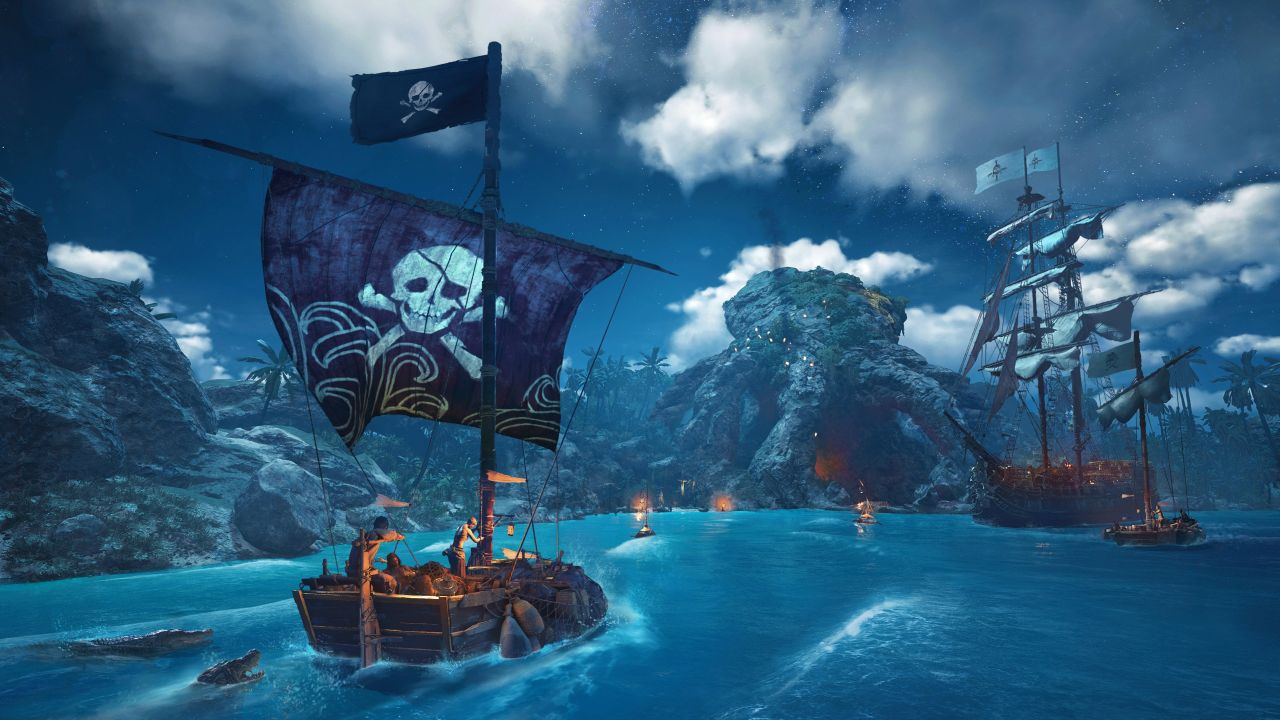
Combat will be frequent, either by your own accord or by running missions. Depending on the size of your ship, you can have weapons facing in all four directions, as well as an overhead bombardment-type cannon. Using the cannons is easy, as you line up the targets, aim and fire like in any third-person action game, and the past AC games. You can ram other ships with good timing and direction, as well as brace against incoming attacks. The combat can be exciting and explosive, as you control your speed by trimming sails, rotate to face different cannons at the enemy, and target their glowing weak spots for extra damage. Fun as it is though, it's rarely challenging - the danger comes from engaging ships of a higher rank, rather than smart enemy AI who can pull off advanced maneuvers. You will be sunk with just two shots by a higher-level vessel, not because they outsmarted you, and you can't do much about it. The basic AI does mean that there are sometimes chances to escape, as they chase you for a bit but eventually give up.
You can also engage in combat with land targets, by starting a raid on an outpost. While the raid goes on, you float in the nearby waters and destroy the defending towers, as well as a number of enemy ships that spawn, before grabbing your rewards and sailing away. In late-game, this mechanic expands to fort raiding with other players, which requires very high level ships.
The combat and sailing around are all meant to help stuff your coffers. Each ship sunk presents an opportunity to gather coins and materials that they were carrying onboard. One annoyance is that you have to rotate the camera and look at any loot you want to pick up from the surface, and without any glow, it's easy to miss things, so you just end up spamming the loot button as you sail over items. You will also gather raw material by sailing up to cliffs, outcrops, and ship wreckages, with a QTE minigame (which can be turned off in options). It would have been nice if auto-gather from the water was also an option.
In the open world, attacking a faction ship makes them hostile towards you, but that wanted rating disappears after a few minutes, returning back to neutral. This means you can do plenty of hit and runs, and continue on your journey without much trouble or ongoing conflict. If you do eventually get sunk during an ill-fated encounter, with just a bit of coin you can respawn not far from the scene and sail back to recover all your loot. You can also choose to respawn on land, at the nearest outpost.
Visiting many of the map's outposts is an opportunity to go ashore and walk around as the pirate captain in third person. There are the two pirate dens, small hubs that have a bunch of locals wandering around, along with vendors to let you craft upgrades and do trades. Elsewhere, the map is littered with small outposts that range from scenic beaches, dark enclaves, and storm battered ruins. The visual variety between these outposts is nice, and you can walk around these small areas for a break from the sea. But they all offer the same few vendor NPCs with the same services, so there's not much sense of discovery in each one beyond the visuals. These outposts must be visited to become fast-travel destinations, and while convenient, fast travel is noticeably expensive.
All of the outposts and safe havens you can enter are small in size and the majority are the makeshift camps. Meanwhile, you are sadly unable to explore the many cities and factories that belong to the other factions. You can observe them from the water, and trade by anchoring nearby, but cannot enter and explore these areas on foot. It may remind players of how The Falconeer handled its disappointing interactions with towns.
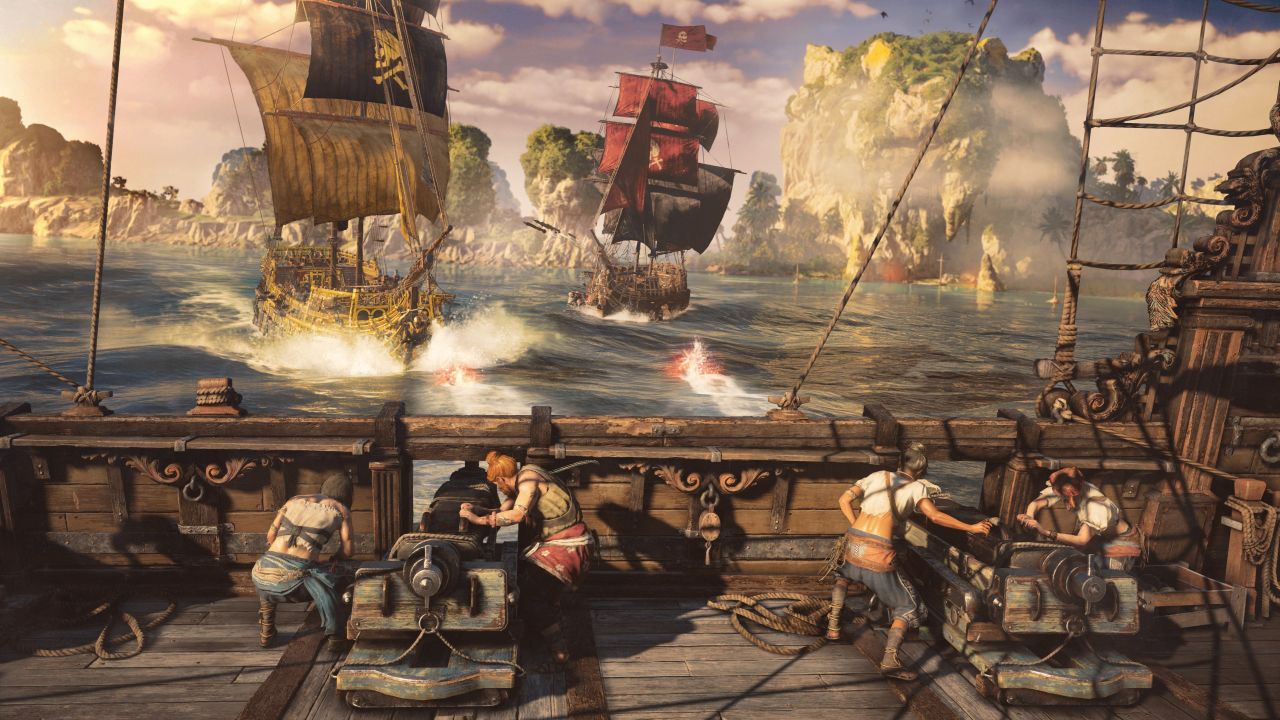
Stopping by the outposts helps break up the pacing of the constant sailing, and lets you interact with vendors. All that naval combat helps you accumulate lots of crafting materials and goods, which can be stored in a warehouse for later use, or sold. A good way to make coin is to check the prices at the vendors, which have a helpful UI indicator when they are selling low and buying high. Trading has a mix of quality-of-life features – while the warehouse storage can be accessed from any outpost, there's still some busywork of having to constantly transfer materials to your ship, as you cannot sell directly from warehouse.
Vendors not only offer materials and goods, but they also let you craft new items. You get to choose your pirate captain's appearance and buy new clothing items, much like you can also customize your ship with different colors, sail patterns, and other decorative elements. But more importantly, you can increase the vessel’s combat rating by equipping new guns and armor. You can have regular cannons, long-range ones, or those that act as a shotgun blast for close-range damage, and more. Further options include rare versions with different damage ratings and special perks, such as causing fire or flooding effects on the enemy. You can outright craft new ships, though with just 9 to choose from, the selection is a rather limited. The different ships have a base power rating, as well as slightly different speed and health stats, plus a special attribute and a role such as Support or DPS. Like in most RPG-style systems, it's probably best to wait until closer to end of the game before splurging your cash and materials. Mid-game upgrades seem like a waste as you will soon outgrow their usefulness.
Some new cannons can be acquired as rewards, but most need to be crafted using raw materials. If you are short on something, the map can apply helpful filters that show where they can be gathered, or which trade routes carry them that can be attacked and looted. But before you can craft, you actually need to get the blueprint, which is the first MMO-style design hint that reveals the game's mixed ambitions. Blueprints can be purchased from specific outposts, which the game at least tells you about without further legwork. In another bit of needless MMO-like design, refining materials takes real time, sometimes a few minutes.
While in town, you can also pick up a few optional side quests, from the job board or from vendors. These sometimes have a bit of story to them, but they are nonetheless very dull and mostly straightforward. You will be asked to either ferry some item to another location, or sink a specific enemy ship. Unfortunately, that's pretty much exactly the same types of scenarios that the main campaign has you doing anyway – there is a definite lack of memorable mission types or scripted battles, outside of a very few. Despite the initially satisfying sailing, the lackluster missions and repetitive side quests begin to take the wind out of your sails after a dozen hours. Elsewhere, you can completely ignore cooking and hunting mechanics. Hunting is never needed except for standalone side quests, and you get plenty of food from regular gameplay and looting (which provides temporary stat bonuses to sailing and combat). Sure, there are some forgettable collectibles, treasure hunts, and investigations to chase, but it's not all that entertaining, and things really begin to feel stale as you wrap up the story at about 20 hours of sailing.
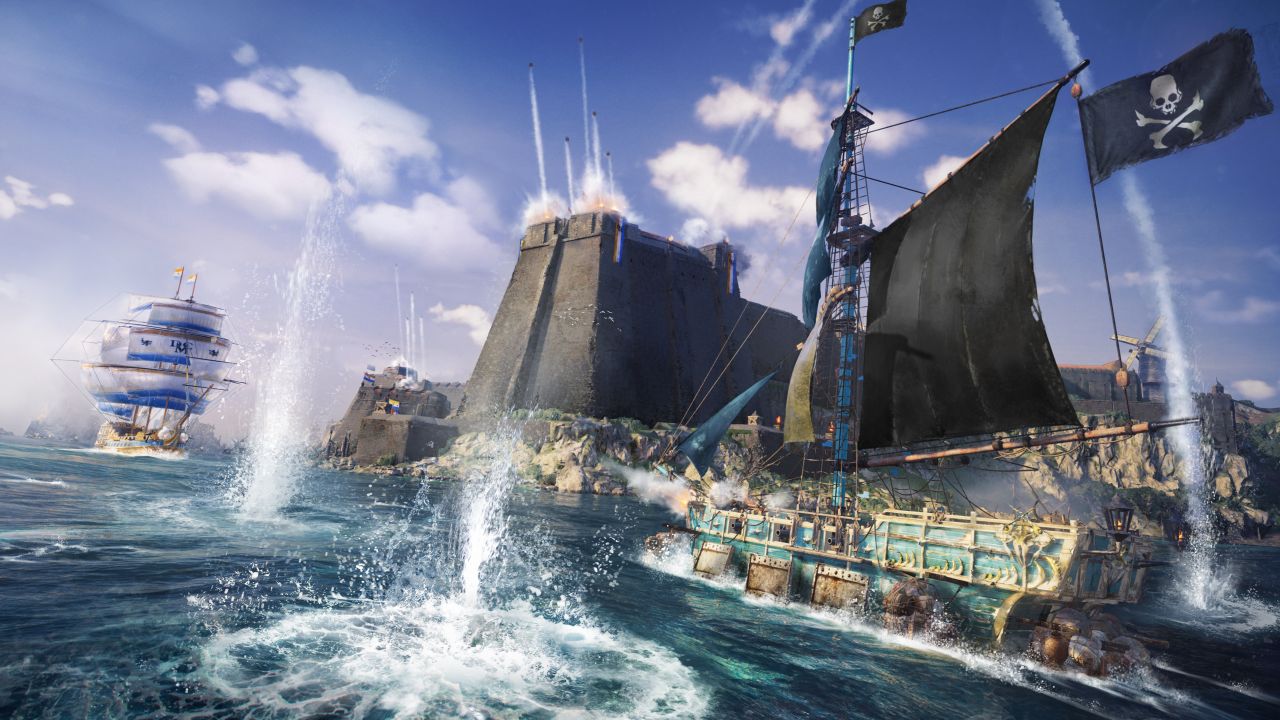
After the main story, players unlock a whole new end-game series of mechanics. You can now manage your own trading empire by taking over production outposts, running goods between them, and handling crafting of special materials. All of this is to earn new currency called Pieces of 8, which lets you buy end-game items from a special vendor. But this new venture is just a huge grind – once again, the game chooses to handle goods production with real-time hours, and you can't fast travel to these outposts, requiring you to become a boring merchant yourself. There's absolutely no drive or desire to keep sailing around to deliver materials, unless you desperately want some kind of powerful end-game weapon. The game also mentions that you will lose your production empire at the end of an in-game "content season" lasting around 90 days, which again seems like a misguided MMO-style gameplay attempt, somewhat inspired by GTA Online's core gameplay loop of managing businesses. The whole system should have also been available from the start of the adventure, to give a little more meat on these bare bones.
Skull and Bones does take place in a shared world, as all your adventures can be accompanied by other players, in a cooperative group of up to three vessels. If you just sail by yourself, it’s still very cool to see other pirate captains and their ships docked at outposts, as it adds to the immersion. Unfortunately, just like The Crew Motorfest, the world can only host 15-17 players, which is far too few and ultimately means you rarely encounter anyone, except at the two main pirate outposts.
There are no matchmaking functions, so it's hard to actually get into a group. You can tag yourself as "looking for a group", but it's just a passive indicator that nobody will see unless they manually go into the social menu, and manually join you. Open world PvP and PvE events occur at random, but again joining them is a passive invite to everyone in the lobby, and very few players join PvE ones. You can send out a message for help with a PvE event or an outpost raid, but it only lasts one minute and in our experience nobody ever joins. PvP seems to be more popular as it has better rewards, but that has design issues of its own. Players battle each other over the control of a treasure map, and trying to sail to a destination – but as players can easily respawn quickly nearby, and fast travel ahead of you, it becomes a futile effort. Without any filtering for groups of three attacking individual players, there's much balancing needed before the PvP feels fair and worthwhile. With chat functionality being disabled since launch for some reason, the multiplayer elements of Skull and Bones feel rough and unfinished, despite so many other mechanics trying to push that design philosophy.
The multiplayer-centric design ambitions also seep into the quality of the presentation. The game's visuals certainly look on-par with what you'd expect from a multiplayer title, rather than a cinematic adventure. The Performance visual mode maintains 60fps but the texture and effects quality certainly get reduced; the Quality mode looks noticeably better, but drops the framerate. It's not a great looking title in either scenario though, especially on land, with rough character animations and poor environment details. Audio design is only serviceable, with decent effects, but a lack of polish on the random NPC voice lines. And with only a handful of sea shanties that begin to repeat quickly, long distance sailing becomes a bore. We've also observed a variety of bugs – menus breaking, interactions with NPCs getting stuck, a few outright crashes of the Xbox Series X console, map markers disappearing, and the whole map being revealed despite not exploring it.
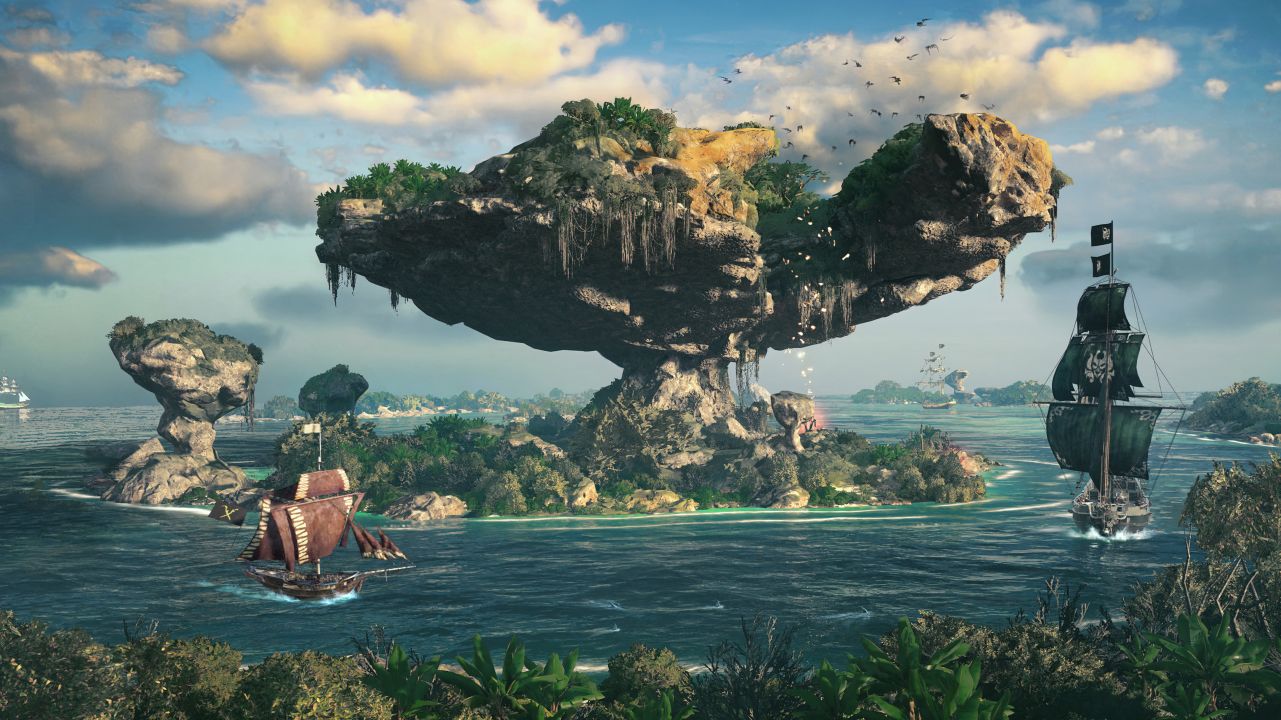
Despite its very long and troubled development cycle, Skull and Bones makes for some fairly positive first impressions. The sailing mechanics are accessible, the ship combat is fun, the world is diverse, passive multiplayer is enticing, and some of the quality of life features make for a few entertaining hours of sea adventures. But the longer you sail, the more issues begin to crop up. From the ill-advised MMO-style mechanics and the lack of proper multiplayer design, to the dull missions and repetitive side quests, the overall impressions begin to sour. The game didn't need to be a sequel to Black Flag or measure up to Sea of Thieves, as it's not trying to match those experiences, but it did need to be better than this. Ubisoft does passive multiplayer well - like in The Division - but there's just nothing of note here except the coolness of seeing other ships in port. At full asking price, and with underwhelming presentation and a variety of bugs, this ship may have left harbor with fireworks and a promise of adventure, but it ends up being lost at sea.
 Comments
Comments













